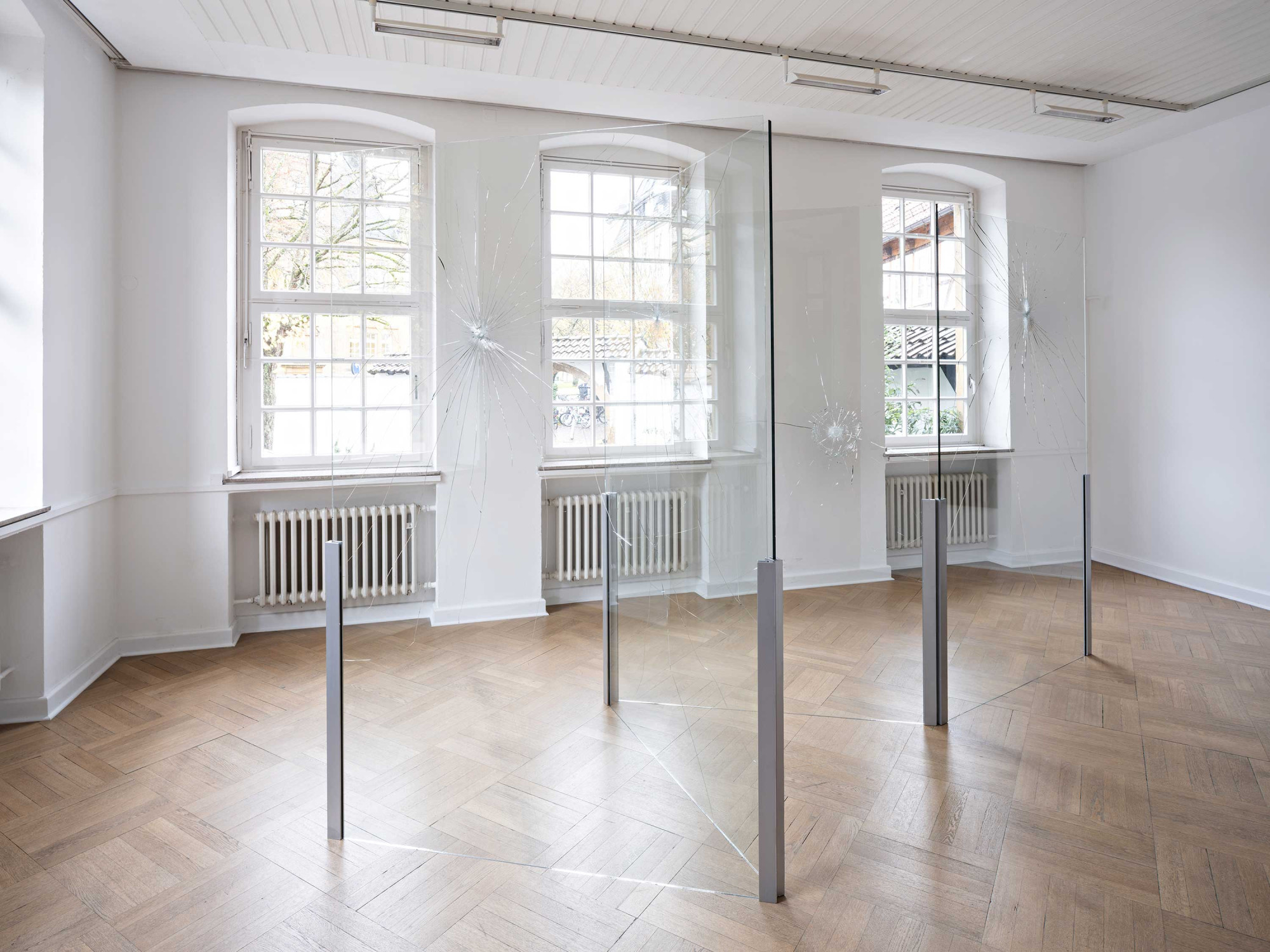
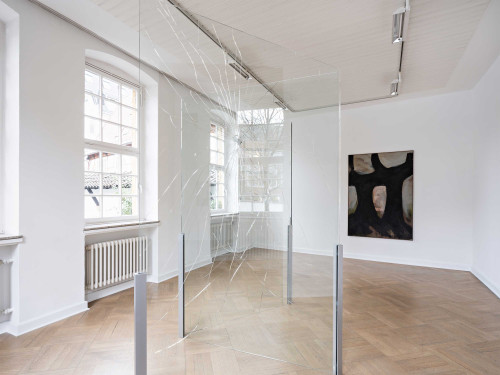
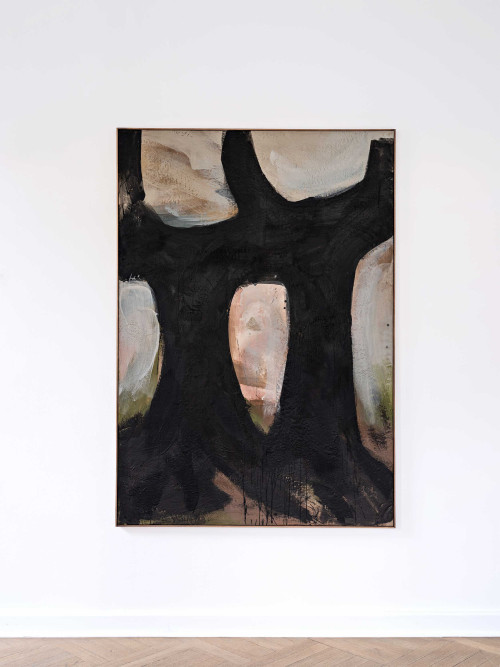
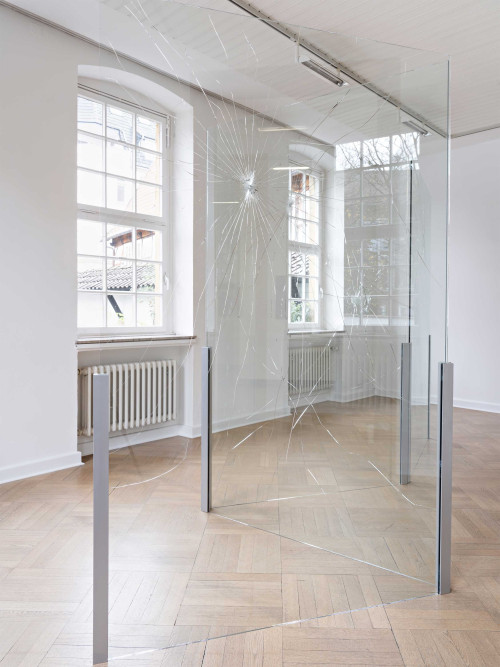
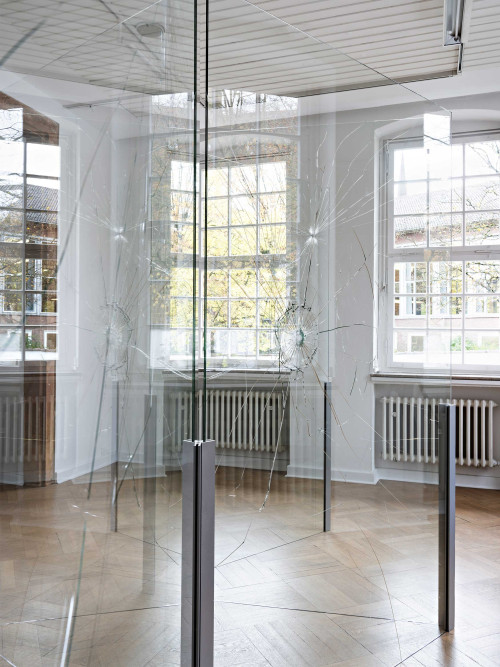
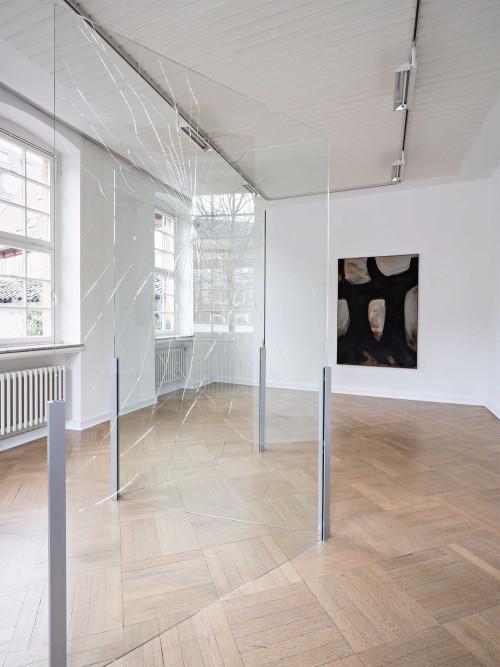


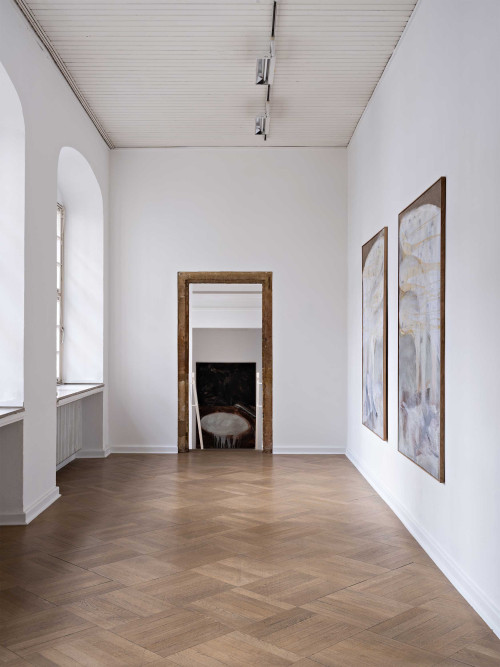


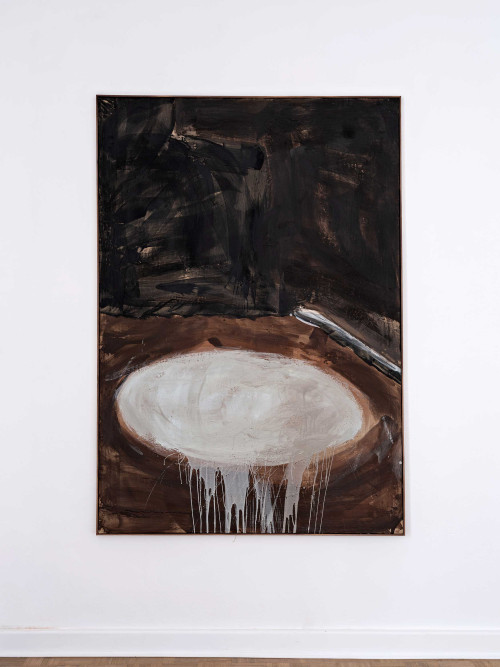

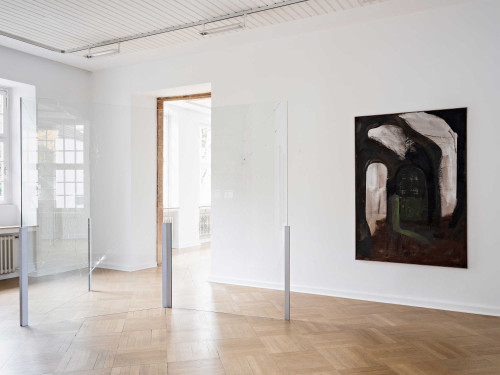

Solo Exhibition: Altered
Kunstverein Bielefeld
Bielefeld, Germany
November 11, 2023 - January 28, 2024
Curator: Undine Rietz
Announcement
https://www.kunstverein-bielefeld.de/en/exhibitions/altered
Kuba Paris
https://kubaparis.com/submission/369553
Kunstverein Bielefeld is pleased to open the first institutional solo exhibition of American artist Analisa Teachworth in Germany on November 11, 2023. Teachworth lives and works in Berlin and New York City. Multidisciplinary practice spans the fields of painting, sculpture, installation, sound, and digital media. Her works are often preceded by thorough research across a diverse array of subjects. Between gentleness and frenzy, her artworks convey with particular clarity all the harshness of the reality that surrounds us, while their highly tactile surfaces exude an almost magical quality. Transition, collectivism, and communication are recurring themes to which the artist devotes herself. They also give the exhibition Altered at Kunstverein Bielefeld its foundation.
The individual elements - exhibitions, materials used, titles of works, etc. - in Analisa Teachworth's creative work and practice are part of an ongoing, interrelated process that is best grasped as a composite whole. This is already manifested in the title of the exhibition Altered. In the perfect participle, the English word is synonymous with the words changed, modified, or reshaped. It presupposes a before in order to be after. It tells of something that has already happened and must now be dealt with, as the title itself also refers to a previous one – Alter. Thus, Teachworth's artistic practice creates a self-perpetuating and mutating prism that is especially concerned with examining society as a construct of memory, action, and underlying cohesion.
Her glass installations – sculptures and wall pieces, particularly the bringing together of glass and metal – can be understood as symbols of heterogeneous systems, as visible and invisible barriers. They play with aspects of transparency, fragility, self-location, and moments of transition. The space-dominating installations create walls of broken glass at defined angles. The viewer can walk around them, reflect on them, and perceive them individually as well or as a whole. Working with brute force, which in itself testifies to the energy and power that underlies these works, the artist creates a being that tells of the interplay between precarious systems. It speaks of the delicacy of social structures, the fragmentation resulting from individual perspectives and societal interests, and thus the proverbial glass house in which one should not throw stones. Psychological aspects can also be found in the glass wall architecture. Splintered mosaics of light refer to the spectra of the inside and the outside. The work's shattered prism structure reflects individuals' and groups' emotions, experiences, and traumas. The glass sculptures thematize threshold experiences of matter that hold both positive and negative correspondences within a singular form.
While the artist starts from manufactured matter in her glass works to define states of being, she builds on natural products in her paintings. The artist identifies fragility as an ontological condition in her paintings through the use of beeswax as a basis for creation. In the context of exploring thoughts of the collective and its susceptibility to internal and external influences, the artist has devoted herself in recent years to observing and analyzing the social behavior of bee colonies. In them, the artist sees an "ultimate symbol of the collective." Her paintings, which contain both haptic and olfactory moments due to the beeswax used, give special attention to these living creatures. The abstract artworks seem heavy and light at the same time. The provoked sensory experiences create emotional excitement, encourage contemplation, and furthermore refer to analogies to the larger system of the beehive. Here, social, economic, and ecological comparisons can be made, as well as a reference to digitalization and methods of bioengineering, which draws from the observation of natural phenomena and processes. Furthermore, it should be emphasized that Teachworth's beeswax paintings are in the art historical tradition of encaustic. An ancient painting technique that is highly resistant to external environmental influences, and in which beeswax mixed with pigments was baked onto painting surfaces such as wood, stone, and ivory. And finally, the use of the precious commodity beeswax, which Analisa Teachworth colors with natural pigments, can also be seen as an appeal to nature conservation and environmental protection.
Next year, the German Romantic Casper David Friedrich will celebrate his 250th birthday. His paintings are declarations of love for the nature that surrounded him. During his hikes, he sketched the landscapes of East Pomerania, Saxony, the Elbe Sandstone Mountains, and the Giant Mountains; in his studio, he combined them to create new experiences of nature, always under the premise of adding something abstract to the purity of nature. Even today, the paintings invite contemplation, perhaps also because it is becoming more and more apparent that the global climate crisis is not coming but instead is already and that we urgently need to work on solutions to preserve many animal species, including our own. Suppose one contrasts Friedrich's landscapes with the man-made interventions in today's landscape of our planet. In that case, the brutal testimonies of the Anthropocene, resulting from overpopulation, urbanization, and food production, can be clearly seen. With this perception, Analisa Teachworth takes up the abstracting understanding of Casper David Friedrich's landscape depictions and, with the help of artificial and natural materials, creates more serene, indefinite places, paths, and worlds with the intention of being abstract and clear at the same time, using a language that does without standardized vocabulary. Bound in the artworks, the sensitive observer uses this practice to create moments of contemplation, regret, fear, and, consequently, a sublimity that resonates in Casper David Friedrich's landscapes.
Text by curator Undine Rietz
- Installation / Video
- Anthem of Flowers
- Tribute Pallet
- Plunge
- Birds
- Performance
- O V A
- Dependency Demographics
- Conjure Migration
- Projects
- relevant